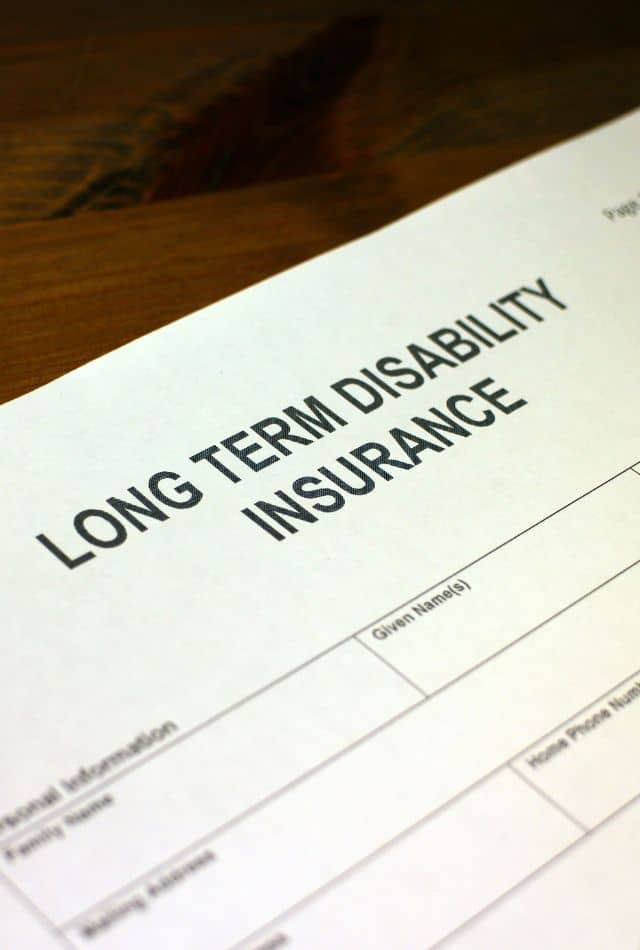Long Term Disability Insurance – Overview
Long-term disability insurance is a policy that pays the monthly policyholder benefits and replaces a large portion of their previous income. It is available for individuals who want to protect their income in the event they are unable to work due to a serious injury or chronic illness. It is always a smart investment for healthy individuals to have a secure financial future.
How Does Long Term Disability Insurance Actually Work
Long term disability insurance works like any other insurance plan. The policyholder pays monthly premiums, and in return, the insurance carrier provides financial benefits during periods when the policyholder cannot work due to a qualifying disability.
Some important facts that can vary among different long term disability insurance policies:
- The benefit amount or the amount that you will get from the policy every month if you are disabled
- The benefit period or the time that your disability benefits will last
- The elimination period or the time you need to wait for your long-term benefit to start after a disabling event
- The definition of disability, according to your policy or the conditions that your policy will and will not cover.
- The premium amount or the insurance cost annually or monthly.

How Much Does the Insurance Pay
The policy benefit amount can determine how much you will be paid if you become disabled. Long-term disability insurance typically pays a percentage of your pre-disability earnings, commonly ranging from 50% to 70%. However, the disability benefit amount depends on the policy you choose. These policies will pay 60 to 80 percent of your previous income.
When Does Long Term Disability Insurance Kick In
Long-term disability benefits begin after the elimination period is satisfied, not immediately upon policy approval. Once you accept the offers of your policy, you can start paying your premiums.
Your policy’s elimination period can determine when disability benefits will kick in if you become disabled. You can also call this time the waiting period. It can help you determine the time you have to wait before you start receiving the benefits after becoming disabled. The waiting period can last from 30 days to 365 days when you apply for long-term disability policy coverage.
Do You Need to Pay Back the Insurance Benefits
Benefits from private long-term disability insurance generally do not need to be repaid except under specific circumstances, such as an overpayment. You can treat these benefits as tax-free income because you have earned them by paying premiums. However, there is a slight probability that you may have to pay a portion of your benefits.
Policyholders may be eligible to benefit from government programs like SSDI and private long-term disability insurance, with specific coordination rules. The collected amount of SSDI or Security Disability Insurance benefits can be deducted from the amount you receive from the private insurance company.
SSDI approval can be challenging and time-consuming, with potential waiting periods for benefits to start after approval. The SSDI benefits often begin with a catch-up payment. It is an amount that can make up for the time of review of your SSA application.
Private long-term disability insurance processes can vary, with some insurers providing more streamlined application and approval procedures than others. It does not take much time to get approval. The company also starts to pay the benefits as soon as they select you for their program.
What Does the Long Term Insurance Cover?
Long term disability insurance generally offers employees financial help after their short term disability insurance ends. The short term disability insurance benefits often expire after three to six months. Long-term disability policies vary in duration, with some providing benefits for a set number of years (e.g., 2 to 10 years) and others until a certain age, often retirement age like 65.
Every long term disability insurance policy has different conditions for excluded diseases, pre-existing conditions, and the payout. In addition, multiple other conditions can make a policy less or more beneficial for the individual.
Long-term disability insurance is an important part of a comprehensive employee benefits package, offering income protection alongside other insurance policies. According to the experts, it is equally important as any other life insurance policy.
Employees should ensure that their chosen policy meets all their needs. If not, they can always purchase expanded coverage according to their preferences. It can be available at a reduced rate through the employer’s insurance carrier.
Here is a list of the primary conditions that can support your long term disability claim.
- Cancer
- Pregnancy
- Mental health issues like anxiety and depression
- Musculoskeletal disorders
- Injuries like sprains, fractures, muscle strains, and ligaments
The benefit amount from long-term disability insurance is typically a percentage of your salary. It does not vary by the specific condition but rather the policy’s benefit formula and maximum limits. For example, some policies will offer a monthly payout when you cannot work a job due to an injury. However, some of these policies can allow you to do other work. Other policies may only allow you to work in some type of profession, even if you are not earning much.
The definition of a policy is entirely based on your capacity to do a job. You may need help to work in a specific profession, but you can do some other work. Some conditions allow you to do a certain type of job, but some severe conditions can prevent you from doing any job.
Condition
Long-term disability insurance generally provides multiple benefits to people who cannot work for an extended period due to injuries or illnesses. Every insurance policy has different conditions and offers various benefits. Before choosing an insurance policy, you must determine whether it matches all your needs.
See Also
Dental Insurance for Senior Citizens